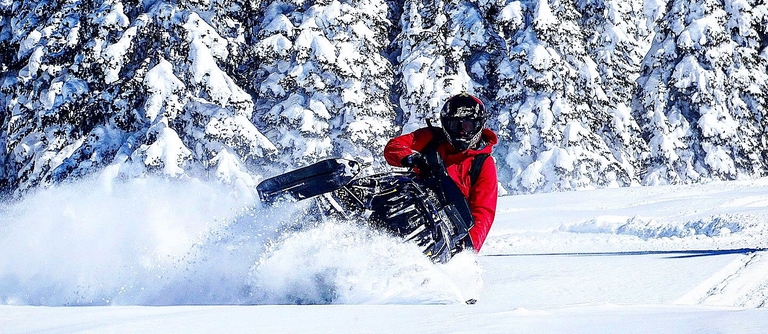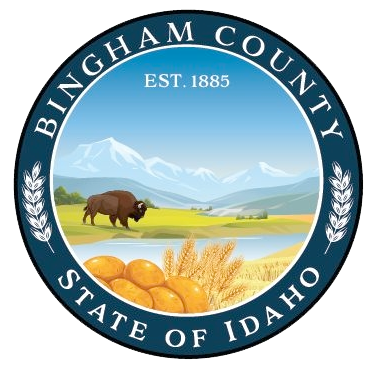Snowmobiling

Bingham County, partnered with Bonneville County, has a wide variety of snowmobiling trails for every snowmobiling enthusiast. Trails are administered and maintained with snowmobile registration fees, by the Bonneville County Recreation Department, Mountain River SnoRider Snowmobile Club, and Swan Valley Snow Roamers.
Snowmobile Trail Map
Groomer Information (208) 538-7285
Avalanche
While Snowmobiling, take advantage of timbered areas, ridges or rocky outcrops as these tend to anchor snow. Spend as little time as possible on open, steep slopes and don't drive across long, open slopes of known avalanche paths. Stay on the same side the wind blows on and avoid crossing steep-sided hills and narrow, steep canyons. You may have trouble getting out. Make a point of checking with your local search and rescue group through the county sheriff's department of your local snowmobile clubs for additional information on winter survival techniques.
If caught in an avalanche, remember to call out to others so they may observe your course. Remain as calm as possible and move away from your machine and equipment. Make swimming motions while moving toward the side of the avalanche but don't try to outswim it. Before coming to a stop, get your hands in front of your face and try to make an air pocket for breathing. Don't waste your strength and oxygen by shouting because sounds are transmitted into snow easily but out very poorly. In soft snow, you may be able to dig yourself out by digging upward, toward the surface. Although you could possibly be temporarily disoriented as to which is up or down.
If you are a survivor, do not desert the victims. You are their very best hope! Search for the victims, directly down slope, below the last point they were seen, probing the surface with your pole. And lastly, always snowmobile with another person. The old fashioned "Buddy System" applies in snowmobiling, too.
Idaho Recreation and Park Association
Frostbite
Frostbite is caused by the exposure of inadequately protected flesh due to subfreezing temperatures. Tissue damage occurs because of reduced blood flow to the extremities. Symptoms are loss of feeling and a dead-white appearance to the affected area. Treatment of frostbite is as follows: campfire, hot water bottle, immersion of affected parts in a water bath of less than 100 degrees. Affected parts should be covered. Do not rub, abrade or apply pressure to affected areas, and do not apply snow or attempt to thaw in cold water!
Hypothermia
Exposure is probably a substitute word for "hypothermia" and is associated with winter. The problem is caused by exposure, although, it can occur during times when the weather is not extremely cold. Treatment: Remain calm. Set up a shelter or move to a timbered area and get the victim out of the elements. Strip off wet clothing, place victim in dry clothing or sleeping bag, and get in the bag with him or her as skin contact will generate heat. If the victim is only mildly impaired, keep him or her warm and dry, and obtain medical assistance as soon as possible

